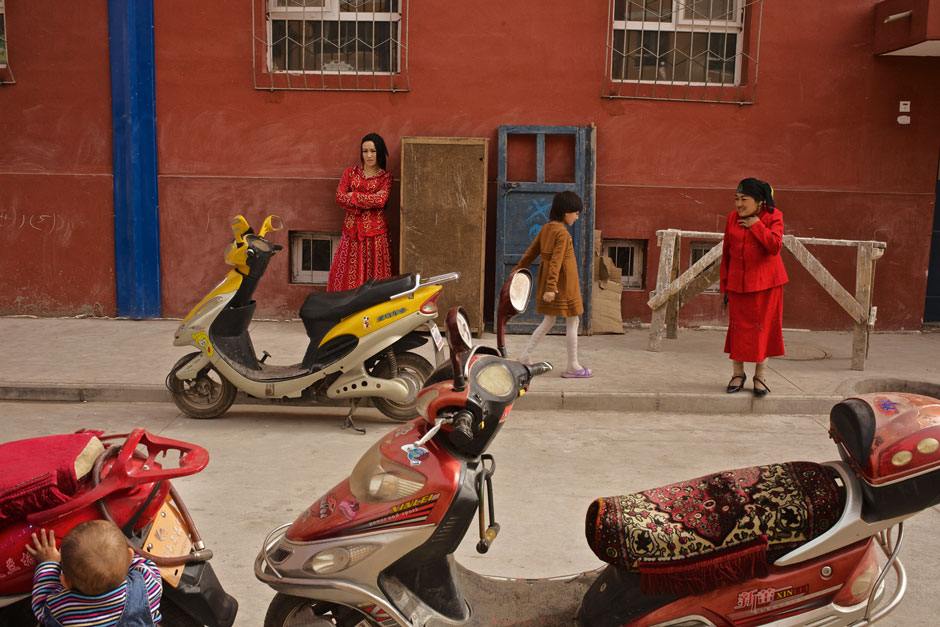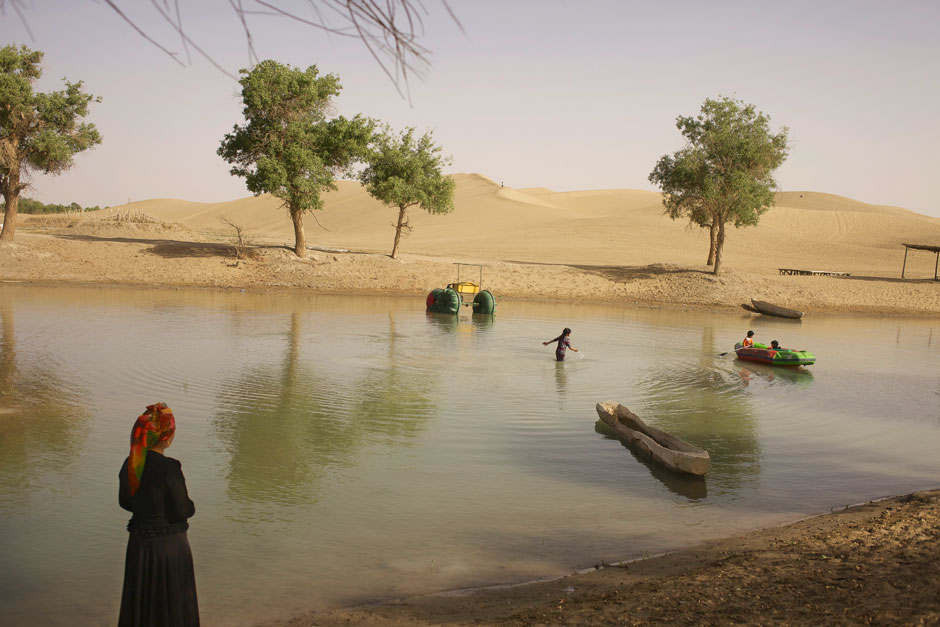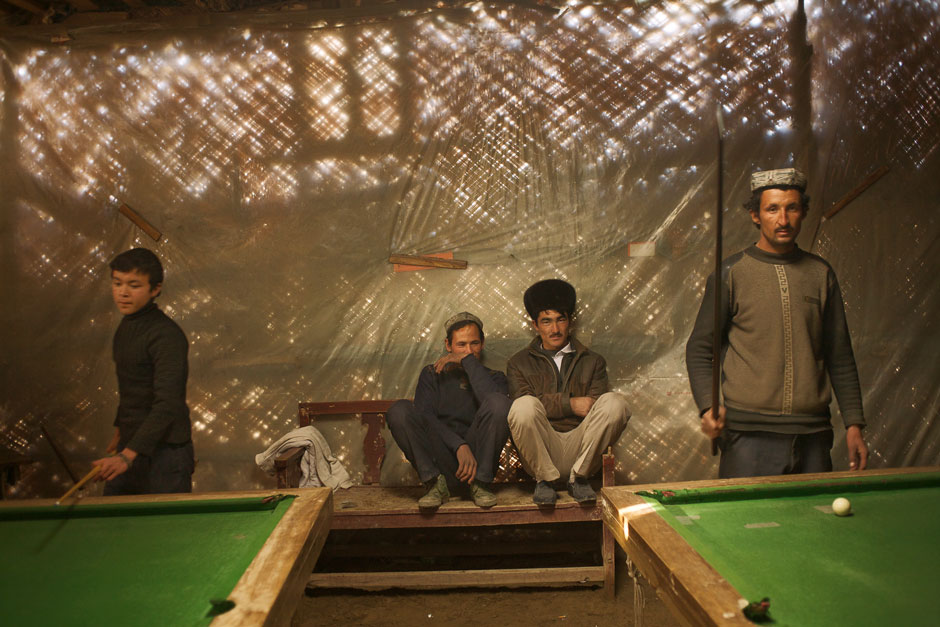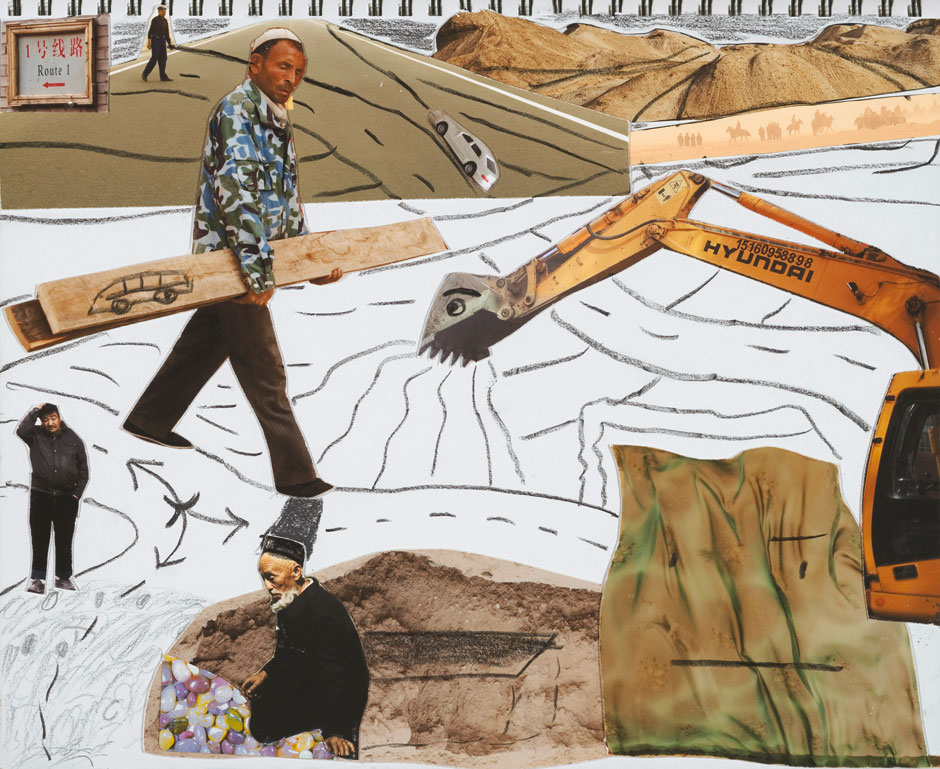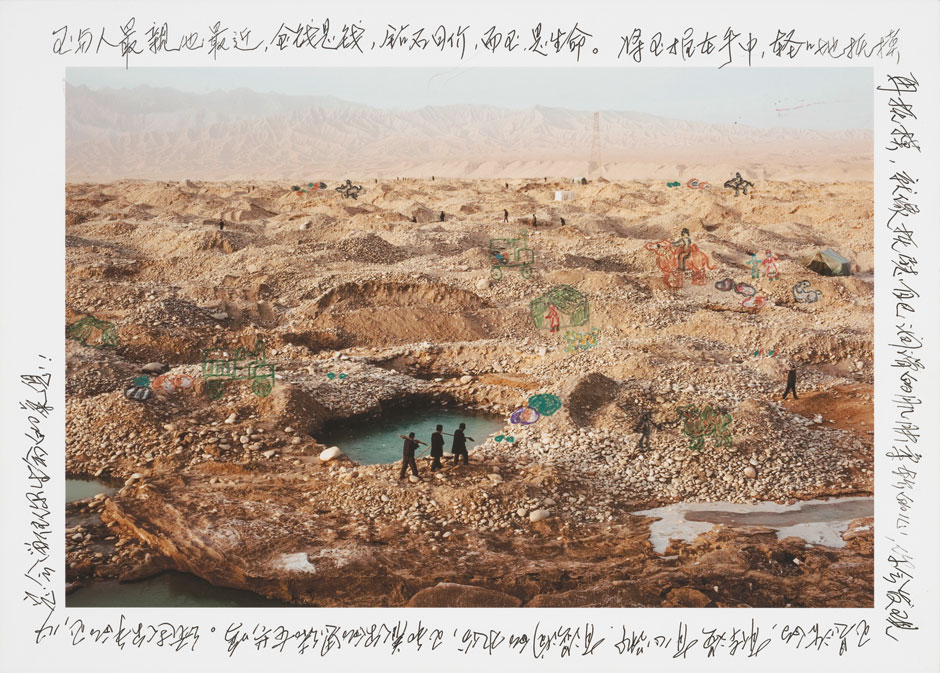Xinjiang is one of those remote places whose frequent mention in the international press stymies true understanding. Home to China’s Uighur minority, this vast region of western China is mostly known for being in a state of permanent low-grade conflict, with terrorist attacks and a ferocious government crackdown, even against moderate Uighur academics. To the outside world, Xinjiang conjures up a series of stock adjectives or phrases: “restive,” “Muslim,” “oppressed,” and—as the misleading titles of more than one recent book have it—China’s “Wild West.”
And yet few outsiders spend much time there. Foreign academics have largely been barred from research, with several prominent scholars of Xinjiang banned from entering China. Foreign journalists tend to fly in and out for a dateline and an interview. The American photographer Carolyn Drake is an exception.
Drake has been traveling to Xinjiang since 2007, when she began photographing Central Asia from her base in Istanbul. Over the years, she has come to know the region well, and struggled to break free from its clichés. The summation of her work is Wild Pigeon, an ambitious, beautiful, and crushingly sad book.
The book gets its name from a fable by a Uighur writer named Nurmuhemmet Yasin, about a wild pigeon that dreams he travels to the land of humans. He wakes up and is told by his mother that his father, a leader of the wild pigeons, was captured and has committed suicide. Now it is his turn to lead the pigeons and try to find them a new home far away from humans. He takes wing, but he too is captured and commits suicide.
It doesn’t take too much imagination to see how this can be seen as an allegory of the Uighurs’ plight. China’s largest administrative region, Xinjiang is about the size of Alaska, or a country like Iran. The area has always been at the periphery of the Chinese empire, and was only settled by Chinese in large numbers after the founding of the People’s Republic. Traditionally, most inhabitants were Turkic peoples, Uighurs or Kazakhs. They were herders, or traders living in former oasis settlements around the Taklamakan Desert. The area was mainly of strategic value—it borders several Central Asian countries, as well as Russia, Pakistan, and Afghanistan—but later became an important source of oil.
According to government figures, the Uighurs are Xinjiang’s dominant ethnic group but they have been losing ground demographically to Han Chinese, who have been encouraged to migrate there over the past few decades. Uighurs are also economically subservient, with most of the best-paying jobs in, say, the oil industry going to Chinese migrants.
Censorship of low-circulation magazines is often slack in China, and Nurmuhemmet’s story was published in 2004 in a local literary journal without problem. When authorities noticed it later that year, however, they banned it, arrested Nurmuhemmet, convicted him of “inciting Uighur separatism,” and sentenced him to ten years in prison—a draconian sentence, but typical for the harsh repression used to counter possible critics of Chinese rule. (He was due for release late last year but human rights groups have received no word of his fate.)
Drake includes a translation of Nurmuhemmet’s story at the end of Wild Pigeon, with phrases and sentences from it interspersed between the book’s chapter-like sections. “Now houses and neighborhoods appear below, along with living, moving creatures,” reads one of these interludes. “They must be the humans whom my mother warned me to avoid.”
The book opens with a series of dream-like photos, printed on sheets of paper about an inch shorter than the next section, making them seem provisional. Gorgeous and blurry, they show such scenes as men repairing a phone line in the middle of nowhere, a forgotten family portrait resting on a shelf, a person lying beneath a shroud. They are untitled and without comment—information about the images included here was provided separately by the photographer—but as with many good photo books, the sequence is crucial: a veiled woman walking down a street on one page, men bathing on the next; parched fields, flooded orchards. The cumulative effect is one of loneliness and anomie, with the subjects often expressing a kind of alienation or lack of autonomy that underlies many ethnic minorities’ experiences in China.
Then comes the most courageous part of the book, printed on full-sized paper. Drake writes in an afterword that the political climate had placed a barrier between her and her subjects. “I decided to stop taking so many pictures…and find ways to bring the people I was meeting into the creative process.” She did so by returning to Xinjiang with prints, and a box of scissors, pencils, paints, and glue. Meeting, as she writes, in “restaurants, art studios, shoe shops, walnut orchards, public parks, courtyards, hotel rooms, slaughterhouses, and jade bazaars,” she gave up control over her creations and encouraged her subjects to cut, color, and reassemble the photos, making new works of art.
Advertisement
One of the most striking pictures from the dream sequence—a person sleeping under a red gauze—acquires blue and turquoise lines. Construction scenes are reassembled into a collage where a backhoe becomes a monster. A man standing in an old city gets colorful clothing and a hat. A tree acquires leaves. A person gains an aura-like layer of spiky lines.
It would be reductionist to give these collages a single interpretation, but one comes away with an overwhelming sense of Drake’s participants grabbing the agency she has given them to create images that reorder, soften, or explain the rigidly authoritarian society in which they live. This is a form of resistance, but not the overt kind that makes headlines. It is the quiet reinterpretation of daily life that often is out of the Uighurs’ control.
This section is part of the long tradition of documentary photographers trying to break through their position as outsiders imposing an interpretation on a community—for example, by handing out cameras to local people. Some people might feel such efforts are a bit forced, but they reflect legitimate concerns of a profession where photographers often interact minimally with their subjects. Drake’s method is more suitable for a society under surveillance—equipping people with cameras might yield only detentions—but it still suffers from some inherent limitations.
One issue are expectations: In making these interventions, are people actually giving you what they think you want? I felt this when looking at one of the creations by a Uighur who was fairly fluent in English. The person eliminated the children from the family picture and drew in crossed Chinese and American flags with the prediction that “Communist China will be collapsed,” while labeling the US as “democratic” and China as “fascist.”
Overall, however, this section of the book succeeds in giving the Uighurs a voice they rarely seem to have in the usual portrayal of their region. And then we are back to the smaller-sized pages. These begin with a few sentences from the short story where the pigeon sees human habitation: “they must be the humans whom my mother warned me to avoid.” Nicely ambiguous, however, is that these pictures are not of Chinese but Uighurs. We see striking pictures of daily life: a harvest, a brilliantly layered picture in a barber shop, followed by a complex picture of four people of different ages in a street with motor scooters. It’s hard to find a definite, clear message in these images but this may be their strength: they force you to stop, wonder, and think about the lives of people in Xinjiang as they are actually lived.
The main pages of the book end with several dark and moody pictures showing a crumbling old city, perhaps being razed for redevelopment; they are probably from Kashgar, the regional capital. Their placement at the end of the book may be inspired by the pigeon’s torment in the cage before he commits suicide at the end of Nurmuhemmet’s story. Then comes the text of the fable itself.
Finally, almost as an afterthought, Drake adds a small booklet glued to the inside of the back cover. It consists of a dozen postcard-sized pictures taken from local photo studios in Xinjiang: a couple posing in front of a backdrop of Mecca, or a photoshopped customer riding horses. These are poignant when one considers how hard it is for ordinary Uighurs to travel on the Hajj (China imposes a quota and mainly allows only older people to go), or how their traditional lifestyle has been modernized away. Studying these studio postcards, I had mixed feelings; the glue holding the booklet onto the cover creased the paper, making it feel like a tack-on. This could be meant to mimic the poor quality family photos that one gets in road side photo studios, and the pre-fabricated dreams offered to Uighurs. But these kinds of photos sometimes actually are people’s true dreams and I wasn’t comfortable having them stuck in in this offhand way at the end.
Advertisement
This is a challenging book. It requires paging through and studying its sequences several times before its intentions unfold. The fable of the pigeon underpins the photographs, but Drake has placed this at the end, so after an initial reading we must go back and look at the pictures again, thinking of them in the context of freedom being suffocated. But this is clearly intentional and with time, this book does what a great social novel does: it forces us to think of a contested region not in terms of op-eds or political analyses, but as seen by people in daily life: the man repairing the phone line, the woman asleep beneath a veil, the motorcycle driven out of the parking garage, leaving only a blur of lights before disappearing into the vanishing old city.
Carolyn Drake’s Wild Pigeon can be ordered from her website.


